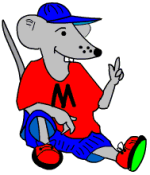 One more maths worksheet with sets of objects to help with counting larger numbers. It is always a good idea to ask for an estimate of the whole amount before starting. Young children only have a limited concept of larger numbers – it can be 1, 2, 3, 4, lots! Grouping into fives or tens helps – but only when children have learned to count up in fives or tens. I would still recommend plenty of practical practice – eg putting a pack of cards into piles of 5 or ten.
One more maths worksheet with sets of objects to help with counting larger numbers. It is always a good idea to ask for an estimate of the whole amount before starting. Young children only have a limited concept of larger numbers – it can be 1, 2, 3, 4, lots! Grouping into fives or tens helps – but only when children have learned to count up in fives or tens. I would still recommend plenty of practical practice – eg putting a pack of cards into piles of 5 or ten.
The second page is a set of number lines to complete, filling in the spaces. Some of these are tricky because they cross the hundreds boundary eg counting on 6 from 97. Make sure your child is confident with counting below 100 before attempting this. Of course it is relatively easy for you to create a number line to put numbers on and to practice counting up and down, and don’t forget snakes and ladders and other dice games which involve counting.
It is always a good idea to listen carefully to your children when they count up to 100 and beyond. Often they will miss whole sets of tens out to begin with. Remember those games of chase you used to play when you had to count to 100 first – now you know why some of your friends managed it so quickly!!
3201-03 Group into fives or tens
3201-04 Count in the hundreds in steps of 1 (pg 1)
 Two straightforward free maths worksheets on counting back in tens from any 2-digit number. By now children should be confident with this, realising that the units digit does not change. If they are finding this difficult a 0-100 number square could be very useful.
Two straightforward free maths worksheets on counting back in tens from any 2-digit number. By now children should be confident with this, realising that the units digit does not change. If they are finding this difficult a 0-100 number square could be very useful.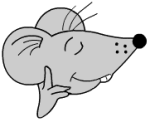 In year 3 the work on counting in tens will continue, but will become much harder as children are expected to be able to count in tens crossing the hundreds boundary. (This means, for example counting on in tens from 80: 90, 100 110 etc and then from 87: 97, 107, 117 etc.)
In year 3 the work on counting in tens will continue, but will become much harder as children are expected to be able to count in tens crossing the hundreds boundary. (This means, for example counting on in tens from 80: 90, 100 110 etc and then from 87: 97, 107, 117 etc.) The first of these worksheets looks at metres and kilometres. Children will need to know that there are 1 000 metres in a kilometre.
The first of these worksheets looks at metres and kilometres. Children will need to know that there are 1 000 metres in a kilometre.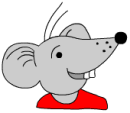 Here are a couple of free Y3 maths worksheets to challenge children’s knowledge of addition up to 20. I suggest that you take just one set of 10 questions at a time and that a stop watch or clock is used to time how long it takes to answer the questions.
Here are a couple of free Y3 maths worksheets to challenge children’s knowledge of addition up to 20. I suggest that you take just one set of 10 questions at a time and that a stop watch or clock is used to time how long it takes to answer the questions.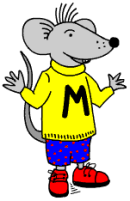 These two worksheets continue the Using and Understanding strand with a look at making subtraction number stories. Encourage children to make realistic sentences using everyday situations. Using money and measurement are often the easiest ways to make up a number story. Also encourage them to make different types of stories rather than repeating the same one with different numbers. They may need a little prompting to think of situations: tickets, change from shopping, time spent on an activity are just three ideas.
These two worksheets continue the Using and Understanding strand with a look at making subtraction number stories. Encourage children to make realistic sentences using everyday situations. Using money and measurement are often the easiest ways to make up a number story. Also encourage them to make different types of stories rather than repeating the same one with different numbers. They may need a little prompting to think of situations: tickets, change from shopping, time spent on an activity are just three ideas. By Year 3 (7/8 years old) children are expected to know the names of, and recognise, some quite tricky 3-D shapes. These include prisms, cuboids, cylinders and pyramids. As well as this the term prism can be used for a variety of shapes, including triangular prism, hexagonal prism and octagonal prism. These terms are not really used in everyday life and many adults would not know what the terms mean. If children are to become familiar with them they will need a lot of practice naming the shapes and recognising their properties.
By Year 3 (7/8 years old) children are expected to know the names of, and recognise, some quite tricky 3-D shapes. These include prisms, cuboids, cylinders and pyramids. As well as this the term prism can be used for a variety of shapes, including triangular prism, hexagonal prism and octagonal prism. These terms are not really used in everyday life and many adults would not know what the terms mean. If children are to become familiar with them they will need a lot of practice naming the shapes and recognising their properties.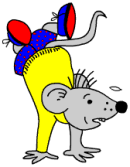 Similar to the year 2 worksheets but with harder numbers. Children are asked to supply two whole numbers to make the answer total. Some children will have little experiences of this type of question, but will soon catch on to what is needed. Again, some will start with ‘safe’ answers such as 79 + 1 = 80, but should soon gain the confidence to show how good their addition skills are.
Similar to the year 2 worksheets but with harder numbers. Children are asked to supply two whole numbers to make the answer total. Some children will have little experiences of this type of question, but will soon catch on to what is needed. Again, some will start with ‘safe’ answers such as 79 + 1 = 80, but should soon gain the confidence to show how good their addition skills are.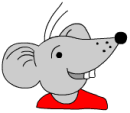 These two worksheets look at doubling larger numbers, including those in the teens. It is well worthwhile asking children how they have worked these out in their heads, making use of the knowledge they have. For example doubling 17 can be worked out in several ways:
These two worksheets look at doubling larger numbers, including those in the teens. It is well worthwhile asking children how they have worked these out in their heads, making use of the knowledge they have. For example doubling 17 can be worked out in several ways: One more maths worksheet with sets of objects to help with counting larger numbers. It is always a good idea to ask for an estimate of the whole amount before starting. Young children only have a limited concept of larger numbers – it can be 1, 2, 3, 4, lots! Grouping into fives or tens helps – but only when children have learned to count up in fives or tens. I would still recommend plenty of practical practice – eg putting a pack of cards into piles of 5 or ten.
One more maths worksheet with sets of objects to help with counting larger numbers. It is always a good idea to ask for an estimate of the whole amount before starting. Young children only have a limited concept of larger numbers – it can be 1, 2, 3, 4, lots! Grouping into fives or tens helps – but only when children have learned to count up in fives or tens. I would still recommend plenty of practical practice – eg putting a pack of cards into piles of 5 or ten. A couple of data handling worksheets. The first re-inforces the year 2 work on sorting numbers. The second uses a Venn diagram to sort shapes. This is the simplest kind of Venn diagram where squares are sorted as a special set of shapes. Give your children plenty of practice at sorting into different sets, using a variety of criteria, including shape, colour, size etc. Also get them to discuss the best way to show their results. Further examples of this will come later, including more on Venn diagrams and tallying.
A couple of data handling worksheets. The first re-inforces the year 2 work on sorting numbers. The second uses a Venn diagram to sort shapes. This is the simplest kind of Venn diagram where squares are sorted as a special set of shapes. Give your children plenty of practice at sorting into different sets, using a variety of criteria, including shape, colour, size etc. Also get them to discuss the best way to show their results. Further examples of this will come later, including more on Venn diagrams and tallying.